Lafayette Anticipation associate curator Anna Colin talks to artist Tyler Coburn about Ergonomic Futures, a speculative project engaged with art, design, science, anthropology and writing. In this interview, Coburn discusses the research, production process and network of collaborators of a multilayered project ultimately concerned with the futures of humankind. Anna Colin: When one comes across your museum seats Ergonomic Futures (2016—) in contemporary art exhibitions—and soon in natural history, fine art, and anthropology museums—they look… [read more »]
Pier 54 | High Line
In 1971 Willoughby Sharp curated now legendary exhibition Pier 18: for one day, 27 artists were invited to create original works to be exhibited at an abandoned Pier in the Financial District, NYC. Artists Harry Shunk and János Kender photographed the various events, which were not open to the public; the black and white photographs were then exhibited at MoMA.
Gordon Matta-Clark suspended himself from a ceiling rafter, Vito Acconci wore a blindfold and had ‘someone who he doesn’t trust’ walk him by the edge of the water, and Jan Dibbets created serial sunset photographs. But the most shocking element of the exhibition might actually be the fact that out of the 27 artists selected, none were women.
This past summer Cecilia Alemani, Art Director of the High Line, organized Pier 54 as a tribute and a reaction against Pier 18, featuring only female artists.
See Liz Ligon’s photographs of the performances and read a short interview with Cecilia Alemani!
Pier 18 participants: Vito Acconci, David Askevold, John Baldessari, Robert Barry, Bill Beckley, Mel Bochner, Daniel Buren, Jan Dibbets, Terry Fox, Dan Graham, Douglas Huebler, Lee Jaffe, Richards Jarden, Gordon Matta-Clark, Mario Merz, Robert Morris, Dennis Oppenheim, Allen Rupersberg, Italo Scanga, Richard Serra, Michael Snow, Keith Sonnier, Wolfgang Stoerchle, George Trakas, John Van Saun, William Wegman, Lawrence Weiner.
Pier 54 participants: Leonor Antunes, Rosa Barba, Francisca Benitez, Carol Bove, N. Dash, Liz Glynn, Sharon Hayes, Iman Issa, Margaret Lee, Maria Loboda, Marie Lorenz, Shana Lutker, Liz Magic Laser, Jill Magid, MPA, Virginia Overton, Leah Raintree, Emily Roysdon, LaToya Ruby Frazier, Aki Sasamoto, Xaviera Simmons, Mika Tajima, Andra Ursuta, Sara VanDerBeek, Allyson Vieira, Marianne Vitale, and Anicka Yi.
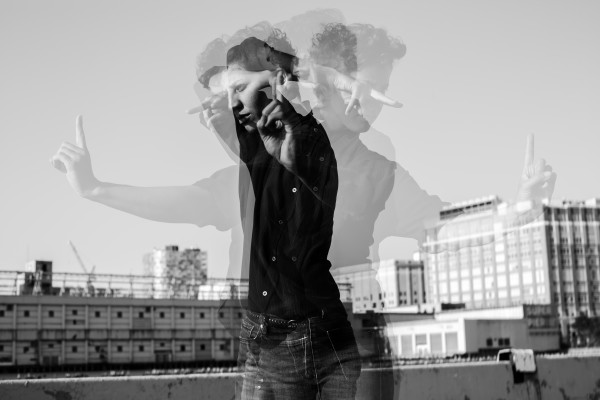
Francisca Benitez (b. 1974, Chile)
Soliloquy in Signs
Francisca Benitez turned the four months leading up to her performance into a residency on the pier, during which she spent time observing the gestures of its myriad visitors. Compiling these gestures into sign language research, for her final action, Benitez performed a “soliloquy in signs,” walking the perimeter of the pier while reciting a combination of memorized and improvised speech inspired by the day’s events.
Ada O’Higgins: In the 70’s, art collector Loic Malle interviewed Harry Shunk, one of the two original photographers, about the original Pier 18. So I thought I’d ask you some of the same questions he was asked about “Pier 54”:
How did the idea for “Pier 54” first come about?
Cecilia Alemani: It’s an idea that I had for some time. I knew about the original project for a while, actually one of the first people I met when I first moved to New York was Willoughby Sharp, who organized Pier 18. I was with a friend of mine working at Flash Art at the time and he was going to interview Sharp, so I went along and met him. He was such a charismatic figure, I was fascinated. We stayed in touch with him and Pamela, now his widow––they basically had the entire archive of his practice in his apartment, so I discovered all these projects by Willoughby, including among them Pier 18.
I curate public art on the High Line, but we also do projects that are not physically located on the High Line. The piers and the waterfront in West Chelsea have been so important if you think of the 70’s and 80’s and how many artists have engaged with the waterfront- but no one goes there anymore because theres a highway. So we wanted to work with that landscape and had the idea of re-staging Pier 18 and calling it Pier 54.
AO: This “conceptual“ project seems to have a very human and humorous sides to it. Was “having fun” supposed to be part of the project or indeed the concept itself?
CA: The way we approached the artists was giving them carte blanche to do whatever they want with the budget. The restriction was that whatever they were going to do was going to be photographed in black and white and printed. Other than that they could do whatever they wanted. Some of the projects are more poetic and conceptual, other are more ironic and funny. The artists reacted in very different ways, there were no similar projects.
AO: Did you meet with any difficulties when carrying out the project?
CA: The shooting for the original Pier 18 show took place in one day, it took us around 8 months to organize all of performances. [laughs]
AO: What was the public’s response?
CA: We had a great response in terms of press and public. It’s refreshing to walk around Chelsea with all its huge monochromatic paintings, and then see these smalls black and white photographs. I think people appreciated that there was no commercial aspect to the show.
AO: I also had some questions of my own. What are your your thoughts on the original Willoughby Sharp show?
CA: I think Pier 18 was an amazing project, very symbolic of that time and important in the context of art history. I don’t think it was a clear choice on Willoughby’s behalf to only choose men, it was just a different time. They didn’t even think about the gender aspect of the show, and the all-male participants were an unfortunate outcome.
There was a sense of spontaneity that is really of that time, the idea of going and squatting the pier for one day to do all kinds of things, that couldn’t happen anymore– it took us several months. The sense of spontaneity and levity was something I look for.
AO: The show has been described as an exercise in historical revisionism. Did you struggle with the fact that staging an all female reenactment of a male show could potentially still be reinforcing a traditional gender binary view, or a view of femininity as only existing in response to masculinity?
CA: That wasn’t the intention of the show, to reinforce the dichotomy between genders. To me its still very surprising that out of 27 artists there was not one woman. It’s kind of shocking because we know Louise Lawler was there, participating in some of the performances, but not as an artist. Pier 54 is a little bit of an ironic response, but our aim was not to reinforce a gender dualism.
AO: The notion of documentation has changed so much since the Pier 18 exhibition- at the time it was unusual to stage performances and only exhibit the photographs to the public. Is the gesture of making art only for the image more potent today, or has it become a less interesting part of the project because it’s so commonplace?
CA: In 1971 the original show was shot with an analog camera, so the artists had a selection of images to chose from, but not that many. In our case the photographer, Liz Ligon, gave the artists something like 300 shots of their performances, so they had to choose a couple out of a gigantic number. Now everything is so digital, and there’s the whole culture of snapshots and selfies. Going back to the act of printing the photos made the artists have to choose the best ones.
AO: Is the show meant to engage with the problem of documentation of performance art, and of selling performance art?
CA: It’s a really big question, but the core idea of our project was that the photos would not be pure documentation, because the photographer would have an active role and be really involved. The captions for the photos also mention the photographer.
What happened at Pier 18 was complicated, because the couple who shot Pier 18, Harry Schunk and János Kender, split up and Shunk tried to have Kender disappear from the archive. In 1992 he did a show in France about the project and completely got rid of Kender. But then when the Lichtenstein foundation found and restored the archive, they included both photographers in the copyright.

Anicka Yi (b. 1971, South Korea)
Esprit de She
Interested in the West Side piers’ more illicit and romantic past, Anicka Yi staged an abstracted interpretation of a romantic cruising encounter in the form of two actresses seducing each other from inside two plastic bubbles.
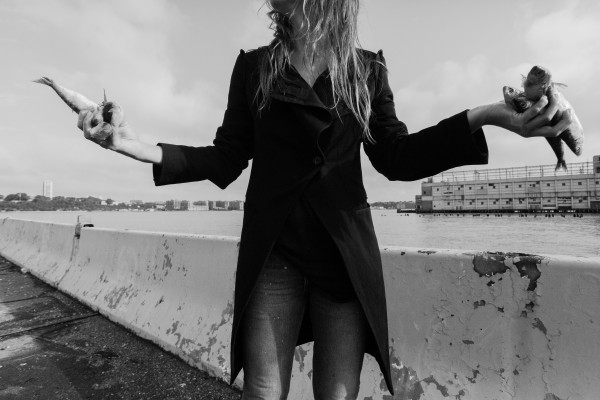
Marianne Vitale (b. 1973, United States)
Whale, Launch, Hurl
Carrying out an action with simultaneously vehement and graceful undertones, Marianne Vitale spent one early July morning flinging sardines to the local seagulls, offering an avian riverside breakfast.
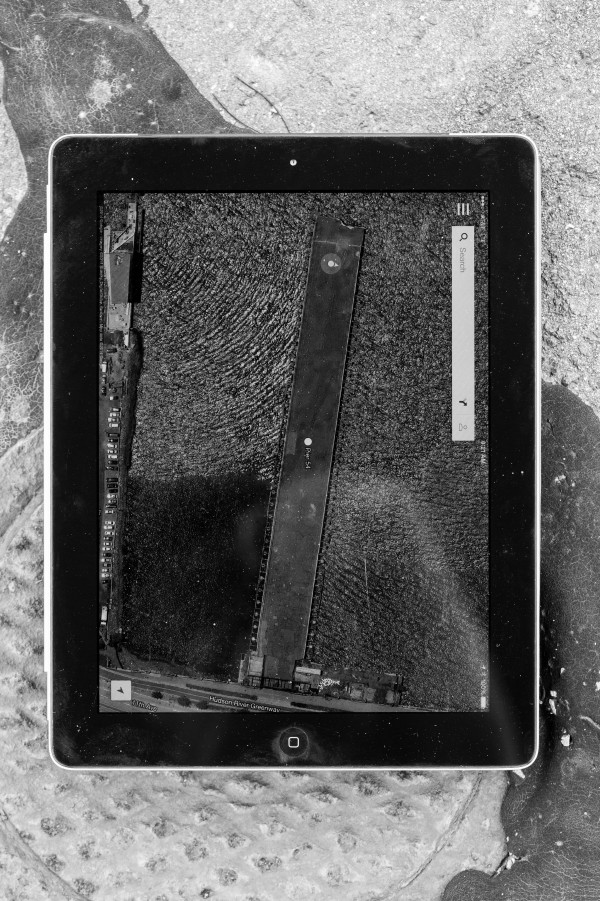
Allyson Vieira (b. 1979, United States)
Location Services
The first action hosted on Pier 54, Allyson Vieira’s Location Services took the flattening perspective of Google Maps as its cue. Observing that the pier appears like a skyscraper when looking at it in Google Maps, Vieira photographed a view of it on her iPad at different locations on the pier, starting at the front gate. As Vieira, the photographer, and the iPad moved closer to the end of the pier, their blue dot walked slowly “up” the silhouette of the pier.
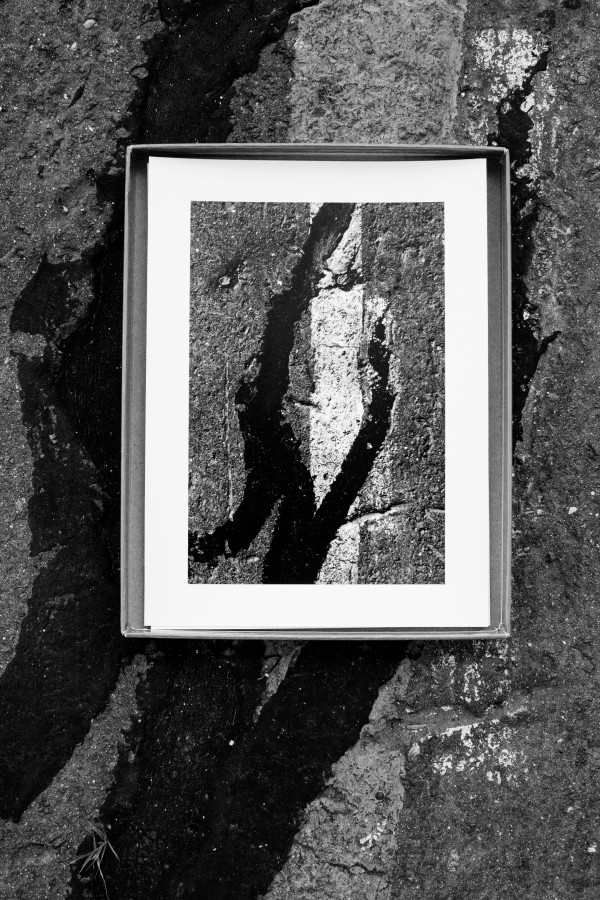
Sara VanDerBeek (b. 1976, United States)
Past Present
Highlighting the graphic gestures found written in the tar lines crisscrossing the pier, Sara VanDerBeek, upon her first visit to the pier, photographed a series of small, graphic moments inscribed on the pier’s surface. She subsequently instructed the photographer to rediscover and rephotograph those same signs – a memory action activated by the premise of the entire Pier 54 project.
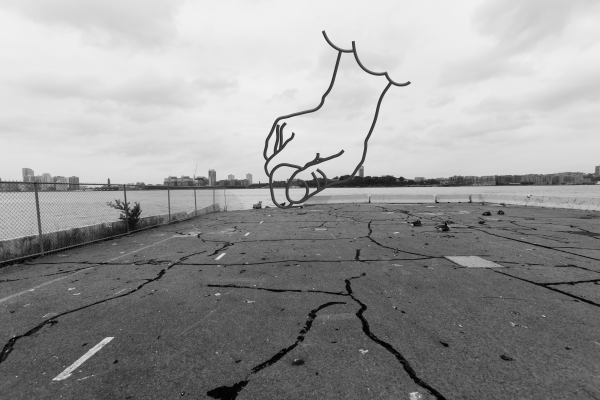
Andra Ursuta (b. 1979, Romania)
Erasure
Completing her action fictionally, Andra Ursuta created a digitally rendered sculpture of a hand erasing the end of the pier, which had partly collapsed into the Hudson River a number of years prior.
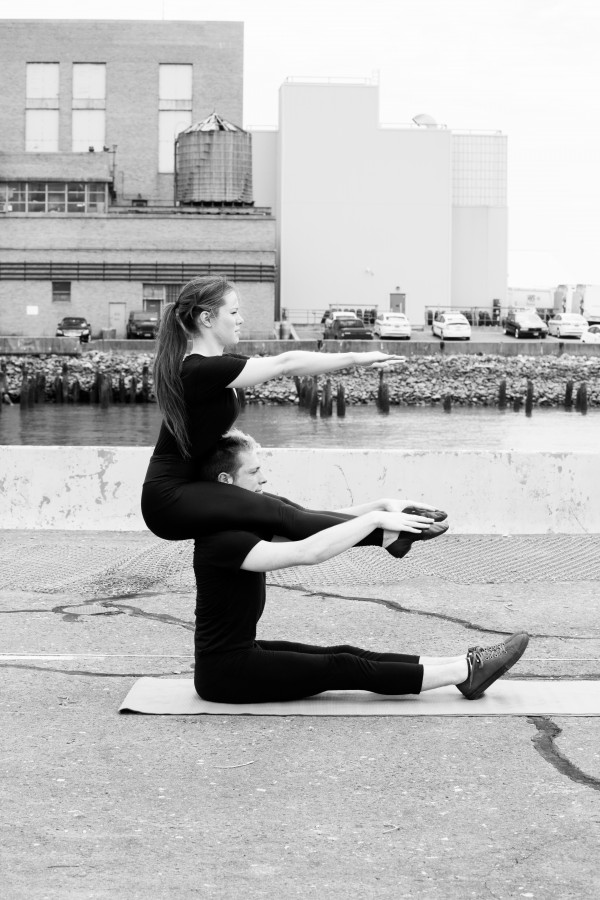
Mika Tajima (b. 1975, United States)
Free Body Culture
Mika Tajima invited two contortionists to spell out the words “Free Body Culture” with their bodies—an act highlighting the strained human body against the backdrop of the rapidly developing architecture of the Meatpacking District and Chelsea waterfront.
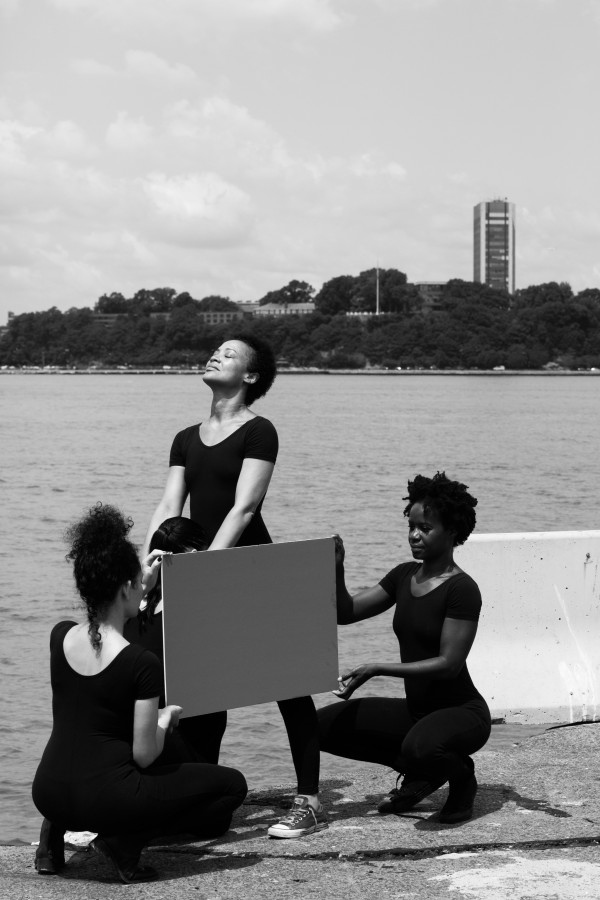
Xaviera Simmons (b. 1974, United States)
Number 18/Number 19
Xaviera Simmons staged a photo shoot featuring five dancers recreating scenes from historical photographs found by the artist when she was doing research into the history of the piers as sites for artistic and sexual experimentations.

Aki Sasamoto (b. 1980, Japan)
Blur the Murder Line
Aki Sasamoto pushed a thirty-pound cube of ice from one end of the pier to the other, using a mop handle and wearing cement platform shoes. Once at the end of the pier, Sasamoto filled a mop bucket with water from the Hudson, changed into ski boots that had been molded into cement blocks and mounted on top of wheeled office chair bases, and, with the wheeled bucket strapped to her waist, proceeded to awkwardly mop her way back toward the front of the pier.

LaToya Ruby Frazier (b. 1982, United States)
A Human Right to Passage
LaToya Ruby Frazier staged a photo shoot in which she was captured waving flags printed with historical photographs from the archives of the Library of Congress, which feature images of immigrants at Ellis Island and other nearby immigration and deportation sites, as well as from Jerusalem and the Dead Sea “Pillar of Salt.” Ruby Frazier’s project is an homage to the pier’s former industrial role as a site for moving both goods and people – a site both of abstracted labor and personal history.
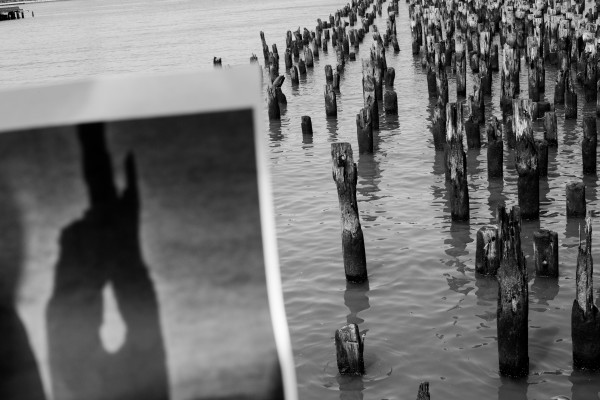
Emily Roysdon (b. 1977, United States)
untitled (Baltrop and friends)
For her two-part action, Emily Roysdon instructed Liz Ligon to find a specific piling whose image the artist had previously emailed to the photographer as a clue. For her second part, Roysdon instructed: “the photo- a view from a distance, shot from above at an angle. a photograph of a woman facing north near the edge of the pier, reading a book topless. a quiet image, lots of breathing room, spare.”
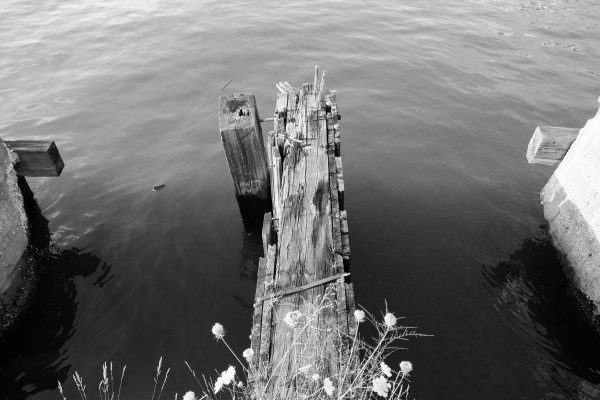
Leah Raintree (b. 1979, United States)
68 Piles at Sunset
With Jan Dibbets’s sunset-based Pier 18 action as inspiration, Leah Raintree photographed the sixty-eight piles alongside one edge of the pier over the course of two and a half hours straddling the setting of the sun. By keeping the exposure time of each photograph consistent, she achieved a subtle grayscale gradient over the set of the photos.

Virginia Overton (b. 1971, United States)
Untitled (Sundown over the Hudson from Pier 54)
Virginia Overton performed a contemplative and romantic action by watching the sun set on a breathtakingly beautiful July evening, as Liz Ligon documented the passing watercraft and changing sky.
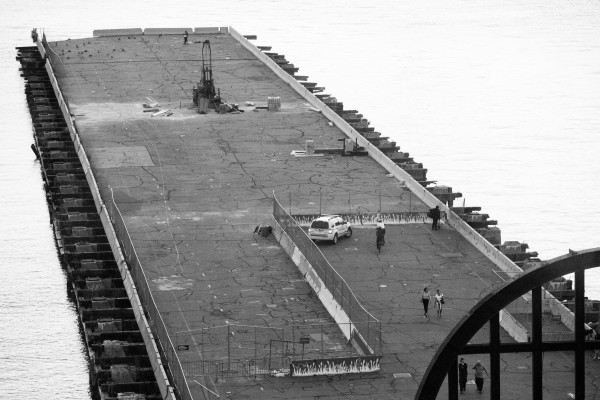
MPA (b. 1980, United States)
Close Encounter
Reflecting on the history of the West Side piers as sites for clandestine male sexual activities, MPA staged a “close encounter” between two women on the pier. For her action, the photographer was instructed to sit and wait in The Standard, High Line, searching for an unannounced couple sneaking onto the pier, who themselves had no idea as to the location of the photographer. The reciprocal unknowing was captured in the photographer’s spying shots.
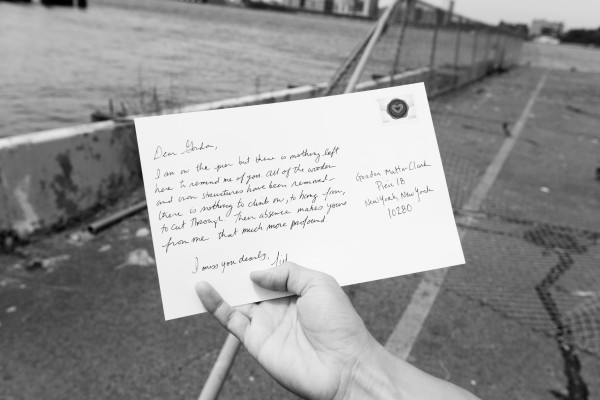
Jill Magid (b. 1973, United States)
Postcards from the Pier
Perhaps the artist most deeply engaged with the actions of the original Pier 18 project, Jill Magid wrote twenty-seven postcards – one addressed to each of the original participants – some humorous, some angry, and some romantic.

Liz Magic Laser (b. 1981, United States)
Directions for a photographer and a DJI Phantom Aerial UAV Drone
Quadcopter
With Dan Graham’s Pier 18 project in mind, Liz Magic Laser invited a drone quadcopter operator to photograph Liz Ligon in her act of photographing the drone, thus forming a dance of dueling surveillance techniques, both contemporary and historical, human and robotic.
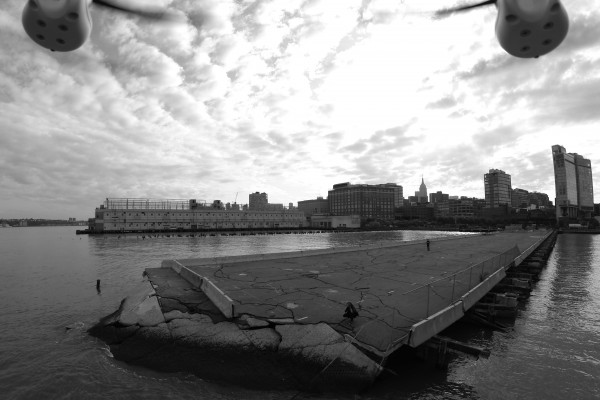
Liz Magic Laser (b. 1981, United States)
Directions for a photographer and a DJI Phantom Aerial UAV Drone
Quadcopter
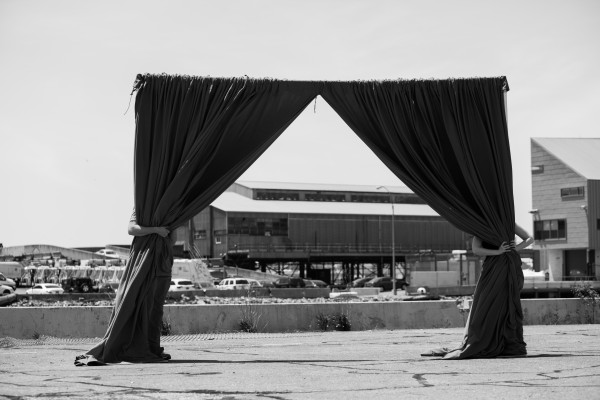
Shana Lutker (b. 1978, United States)
Curtain Blocking
Interested in the pier as its own framing device, Shana Lutker rented an eight-foot-tall crimson theater curtain, which she used to frame a variety of views from the pier – including landmarks and landscape alike.

Marie Lorenz (b. 1973, United States)
Tide and Current Taxi
Continuing her ongoing Tide and Current Taxi project, Marie Lorenz rowed herself and the photographer around the pier in her handmade rowboat, exploring the stalactites found underneath, dripping from the limestone in its cement floor, as well as the pilings found to the north that formerly formed Pier 55.
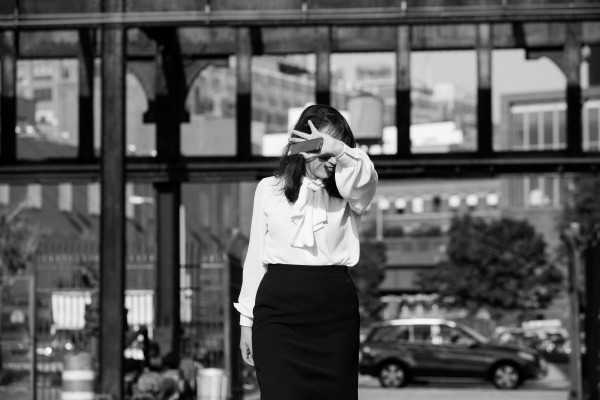
Maria Loboda (b. 1979, Poland)
Untitled
Realizing her action from afar, Maria Loboda invited an actress to perform as a contemporary Greta Garbo attempting to evade the paparazzi – a collective role played by Liz Ligon, the photographer who documented all of the Pier 54 actions – in homage to Garbo’s time in hiding after moving to New York following her retirement in 1953.

Margaret Lee (b. 1980, United States)
I wanted a fire…
Interested in the history of the West Side piers as a former site of cruising and carousing, Margaret Lee invited famed drag queen Vivacious to participate in a photo shoot on the pier, for which the performer modeled multiple colorful, homemade costumes with the backing of a blaring runway soundtrack.
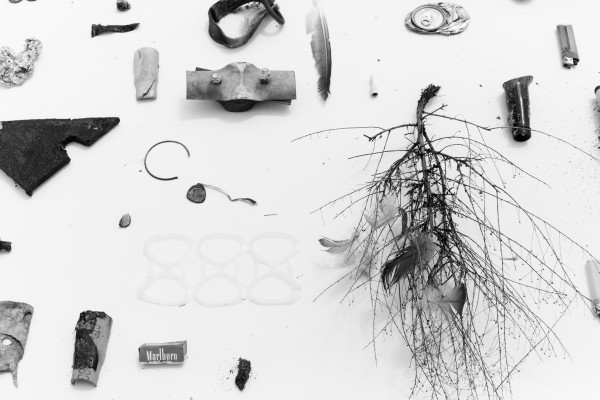
Iman Issa (b. 1979, Egypt)
Material (Pier 54 – New York – 2014)
In an anthropological approach to the pier, Iman Issa gathered hundreds of small objects from the sundry detritus that had made its home on the pier. After arranging the objects on a white, one-by-six-meter plinth placed in the center of the pier, Issa labeled them according to the narratives she subsequently watched unfold between them, grouping the objects into poetically linked clusters.
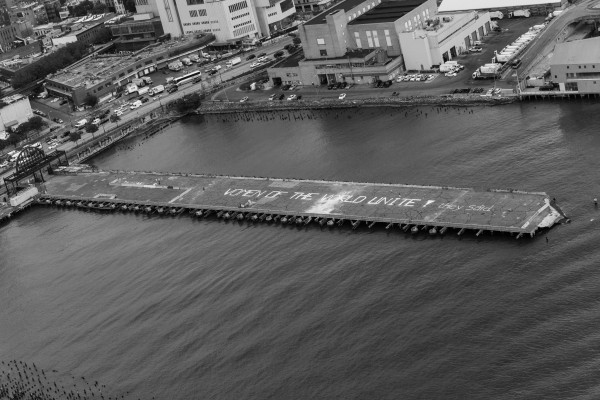
Sharon Hayes (b. 1970, United States)
Women of the World Unite! they said.
Quoting Betty Friedan and the women’s movements of the 1960s, and alluding to Julia Kristeva’s texts on the French student and worker movements of the same period, Sharon Hayes invited seven colleagues to join her in writing the slogan “WOMEN OF THE WORLD UNITE! they said.” in twelve by fifteen foot letters on the pier in white aerosol chalk. The action was photographed from a helicopter flying over the Hudson River.
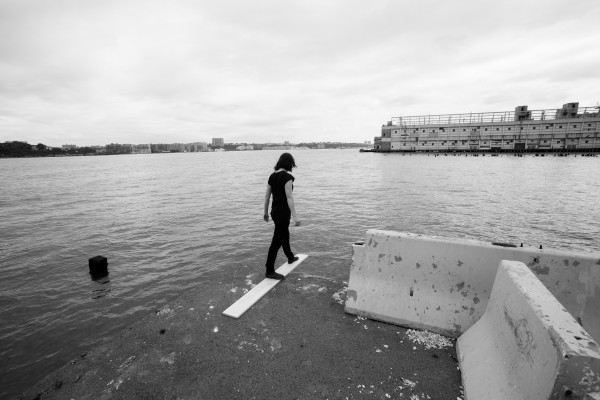
CaLiz Glynn (b. 1981, United States)
Meditation on Staying Afloat (Sink or Swim)
For her project, Liz Glynn took a humorous route with a series of actions titled “Walk the Plank,” “Sink or Swim,” “Lifeline,” and “Black Box.” For these directives, the artist cautiously teetered as far out over the water as possible on an unattached wooden plank, climbed knee-deep into the Hudson, tossed a length of rope to the empty surf, and read aloud her deepest secrets from scraps of paper before tucking them into a homemade black box and throwing them into the river to disappear below the water.

N. Dash (b. 1980, United States)
Hard Line. Soft Line.
N. Dash chose to interact directly with three of the recurring characters found on the pier during her visits: one geological engineer and two contractors hired to drill for soil samples into the seabed below. Fascinated by the matter churned up by the large blue rig that drilled through different locations up to five hundred feet below sea level, Dash drew two lines at the end of Pier 54. One was created out of the sectional poles they used for drilling and one out of the mica-laced mud dredged up from beneath the pier, both revealing the foundations of the project’s canvas and the new character of the neighborhood, which is defined by construction and renovation.

Carol Bove (b. 1971, Switzerland)
Artists’ Meeting
Carol Bove invited all of the other twenty-six participating artists to join her for tea, wine, and conversation at the end of the pier after the completion of all the projects. Any artist unable to attend was invited to mail in her comments for sharing with the group.
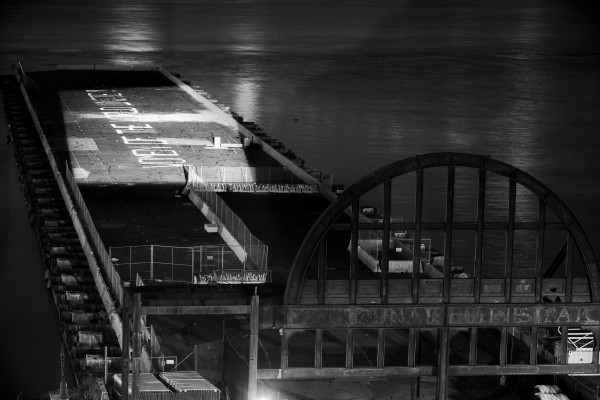
Rosa Barba (b. 1972, Italy)
White Museum, Pier 54
Inspired by her previous White Museum projects, wherein she created a square of light from a 35mm projector installed in the window of a building, Rosa Barba set up a spotlight in a room in The Standard, High Line. By shining a white square of light on the pier after dark, the artist created a dynamic sculpture composed of the hotel window, the light beam, and the frame of light on the pier.
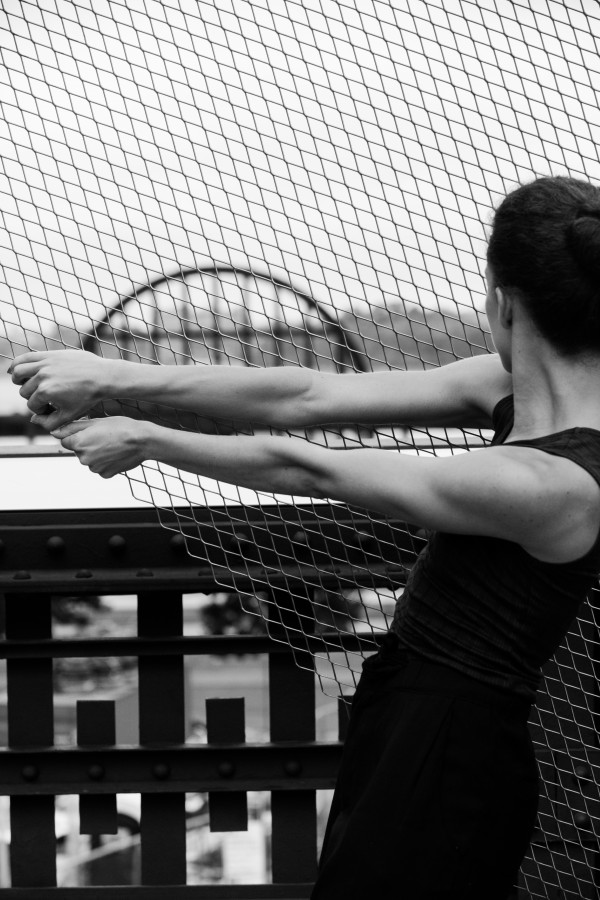
Leonor Antunes (b. 1972, Portugal)
mesh mail dances: eight transitions between one figure to the next
Using the pier as her backdrop, Leonor Antunes asked a dancer to hold a sheet of expanded metal mesh in a variety of configurations that alternately frame, obscure, and dissect the view of the pier. Both the contours of the mesh and the model’s limbs play decisive roles in the resulting compositions.








































































